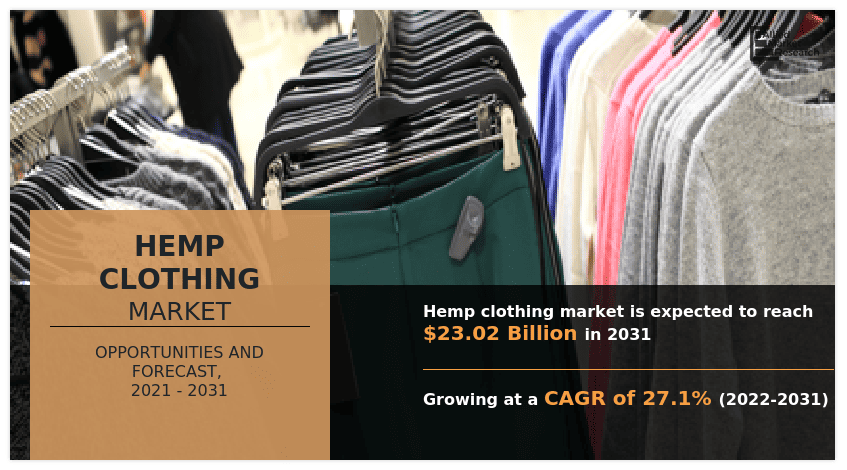Imagine a world where sustainability and style unite seamlessly, creating a fashion-forward industry that honors both our planet and our desire for luxurious garments. In this article, we delve into the exciting realm of hemp clothing and its promising market potential in the high-fashion and luxury industries. Prepare to be captivated by the possibilities as we explore how this versatile and eco-friendly fabric could revolutionize the way we dress, combining elegance, durability, and a greener future. So, let’s embark on a journey together and uncover the untapped potential of hemp clothing in the realm of fashion. Get ready to be inspired!
Understanding Hemp Clothing
What is hemp fabric?
Hemp fabric is a type of textile that is made from fibers derived from the cannabis plant, specifically the hemp variety. Although it comes from the same plant species as marijuana, hemp fabric is sourced from a different strain that contains low levels of THC, the psychoactive compound that gives marijuana its intoxicating effects. Hemp fabric is known for its sustainability, durability, and versatility, making it an appealing choice for the fashion industry.
Properties of hemp fabric
Hemp fabric has a range of properties that contribute to its popularity in the fashion industry. It is known for its exceptional strength, making it highly durable and long-lasting. Additionally, hemp fabric is naturally resistant to mold, mildew, and bacteria, making it ideal for use in clothing. It is also highly breathable, allowing air to circulate through the fabric and keeping the wearer cool and comfortable. Hemp fabric is also known for its thermoregulatory properties, meaning it can help to keep the body warm in colder temperatures and cool in warmer temperatures.
Advantages of hemp clothing
Hemp clothing offers several advantages over traditional fabrics. Firstly, it is an environmentally friendly option, as hemp plants require less water and fewer pesticides compared to other crops used in textile production. Additionally, hemp fabric is biodegradable, meaning it will break down naturally over time and not contribute to landfill waste. Secondly, hemp clothing is highly durable and long-lasting, meaning it will stand the test of time and not need to be replaced as frequently as other garments. Finally, hemp clothing is hypoallergenic and non-irritating, making it suitable for individuals with sensitive skin or allergies.
Current Trends in High-Fashion and Luxury Industries
Sustainability and eco-friendly fashion
In recent years, there has been a growing trend towards sustainability and eco-friendly fashion in the high-fashion and luxury industries. Consumers are becoming more conscious of the environmental impact of their purchasing choices and are seeking out brands that align with their values. This shift in consumer behavior has prompted fashion brands to adopt more sustainable practices and explore alternative materials, such as hemp fabric, in their collections.
Demand for organic and natural fabrics
Another trend in the high-fashion and luxury industries is the demand for organic and natural fabrics. Consumers are increasingly concerned about the use of harmful chemicals in textile production and are seeking out fabrics that are free from toxins. Hemp fabric fits this demand, as it is naturally grown without the need for synthetic fertilizers or pesticides, making it an appealing choice for those seeking organic and natural materials.
Shift towards ethical fashion
Ethical fashion is another important trend in the high-fashion and luxury industries. consumers are becoming more aware of the social and environmental impact of the fashion industry and are looking for brands that prioritize fair labor practices and transparency in their supply chains. Hemp clothing brands are often committed to ethical production practices, ensuring that workers are treated fairly and that the entire supply chain is transparent and accountable.
This image is property of media.zenfs.com.
Exploring the Benefits of Hemp Clothing in High-Fashion
Unique texture and appearance
One of the key benefits of hemp clothing in high-fashion is its unique texture and appearance. Hemp fabric has a natural luster and a slightly coarse texture that sets it apart from other materials. This lends a distinct and fashion-forward look to garments made from hemp fabric, making them stand out in the high-fashion industry. Additionally, hemp fabric can be blended with other natural fibers to create unique and innovative textures and patterns.
Versatility in design
Hemp fabric offers designers a wide range of possibilities in terms of design. It can be woven into various weights and textures, allowing for the creation of different garment styles and silhouettes. Whether it’s a flowing dress, a tailored suit, or a casual t-shirt, hemp fabric can be manipulated and tailored to meet the design vision of high-fashion brands. This versatility in design allows for creativity and innovation in the fashion industry.
Breathability and durability
Hemp clothing is known for its breathability and durability. The natural fibers in hemp fabric allow air to circulate, making it highly breathable and comfortable to wear. This breathability is especially beneficial in warmer climates or during physical activity, as it helps to regulate body temperature and prevent excessive sweating. Additionally, hemp fabric is highly durable and resistant to wear and tear, ensuring that garments made from hemp will last for a long time.
Challenges and Misconceptions Surrounding Hemp Clothing
Perception of hemp as a coarse and rough fabric
One common misconception surrounding hemp clothing is that it is coarse and rough, and therefore uncomfortable to wear. While it is true that hemp fabric has a slightly coarse texture, it softens with each wash and wear, becoming increasingly comfortable over time. Additionally, by blending hemp with other natural fibers, the texture of hemp fabric can be further refined, creating a softer and more luxurious feel.
Limited color options
Another challenge for hemp clothing in the high-fashion industry is the perception of limited color options. Traditionally, hemp fabric has been associated with earthy tones and neutral colors. However, advancements in dyeing techniques and innovations in textile production have made it possible to create a wide range of vibrant and fashion-forward colors using hemp fabric. This allows designers to experiment with different hues and shades, expanding the color palette of hemp clothing and making it more appealing to high-fashion consumers.
Supply chain and production challenges
One of the challenges surrounding hemp clothing is the complexity of its supply chain and production process. Hemp cultivation and processing require specific knowledge and expertise, making it difficult for some fashion brands to incorporate hemp fabric into their collections. Additionally, the availability of high-quality hemp fibers can be limited, leading to supply chain challenges. However, as the demand for hemp clothing continues to grow, efforts are being made to overcome these challenges and establish a more robust and sustainable supply chain for hemp fabric.
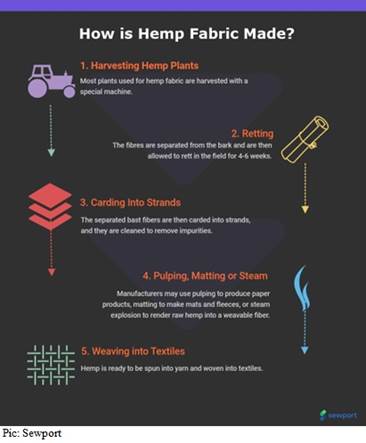
This image is property of static.fibre2fashion.com.
Successful Examples of Hemp Clothing Brands in High-Fashion
Patagonia’s hemp clothing line
Outdoor apparel brand Patagonia has embraced hemp fabric in its clothing collections, recognizing its environmental and performance benefits. Patagonia’s hemp clothing line features a range of garments, from t-shirts and hoodies to shorts and pants, all made from a blend of hemp and other natural fibers. The brand’s commitment to sustainability and its high-quality, durable products have helped to position hemp clothing as a desirable option in the high-fashion market.
Stella McCartney’s sustainable fashion
Renowned fashion designer Stella McCartney has long been an advocate for sustainable fashion and has incorporated hemp fabric into her collections. McCartney has used hemp fabric in various garments, including dresses, jackets, and accessories, showcasing the versatility and fashion-forwardness of hemp clothing. Through her work, McCartney has helped to raise awareness about the potential of hemp clothing in the high-fashion industry and has inspired other designers to explore its use.
Hemp Blue’s denim collection
Hemp Blue, a denim brand dedicated to sustainable fashion, has successfully incorporated hemp into its jeans collection. The brand’s hemp denim offers the same durability and comfort as traditional denim, but with the added benefits of sustainability and eco-friendliness. Hemp Blue’s innovative approach to denim has garnered attention in the high-fashion industry, highlighting the potential for hemp clothing to disrupt the traditional denim market.
Consumer Perception and Acceptance
Educating consumers about hemp fabric
One of the key factors influencing consumer perception and acceptance of hemp clothing is education. Many consumers are unaware of the properties and benefits of hemp fabric, and therefore may be hesitant to incorporate it into their wardrobes. It is crucial for fashion brands and industry experts to educate consumers about the sustainability, durability, and versatility of hemp fabric. By providing accurate and accessible information, brands can dispel misconceptions and promote the adoption of hemp clothing.
Changing attitudes towards sustainable fashion
Consumer attitudes towards sustainable fashion have been changing in recent years, with an increasing number of individuals prioritizing environmentally friendly and ethical choices. This shift in attitudes presents an opportunity for hemp clothing to gain wider acceptance in the high-fashion industry. As consumers become more aware of the impact of their purchasing decisions, they are more likely to seek out sustainable alternatives, such as hemp clothing.
Factors influencing consumer perception
Various factors can influence consumer perception and acceptance of hemp clothing. These include price, quality, design, and brand reputation. While the perception of hemp clothing as a luxury item may initially deter some consumers, the growing availability of high-quality and well-designed hemp clothing at different price points can help to overcome this perception. Additionally, collaborations with renowned fashion designers and influencers can enhance the desirability and acceptance of hemp clothing among consumers.
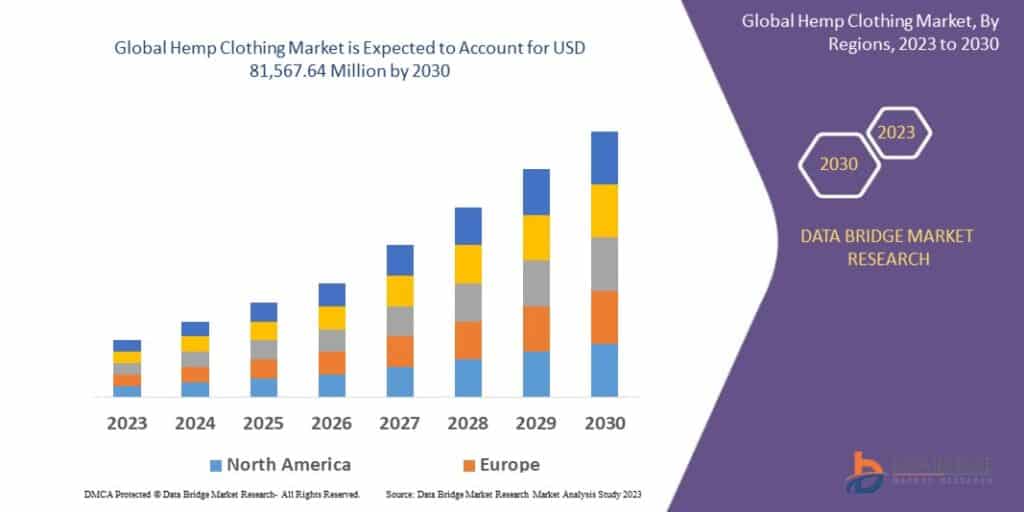
This image is property of www.databridgemarketresearch.com.
The Role of Marketing and Branding
Positioning hemp clothing as a luxury item
To overcome the perception challenges surrounding hemp clothing, marketing and branding play a crucial role. By positioning hemp clothing as a luxury item, brands can elevate its status and appeal to high-fashion consumers. This can be achieved through high-quality craftsmanship, attention to detail, and strategic brand partnerships. By associating hemp clothing with luxury and exclusivity, brands can change consumer perceptions and increase demand.
Collaborations with high-end fashion designers
Collaborations between hemp clothing brands and high-end fashion designers can be a powerful tool in promoting the acceptance and desirability of hemp clothing in the high-fashion industry. By partnering with established designers, hemp clothing brands can leverage their reputation and influence to reach a wider audience and gain credibility. These collaborations can also help to push the boundaries of design and showcase the potential of hemp fabric in innovative and fashion-forward ways.
Influencer marketing and social media presence
Influencer marketing and social media presence are essential in increasing consumer awareness and acceptance of hemp clothing. By partnering with influencers who align with the brand’s values and target audience, hemp clothing brands can effectively promote their products and educate their followers about the benefits of hemp fabric. Social media platforms provide a powerful tool for showcasing the versatility and style of hemp clothing, allowing brands to engage with consumers directly and build a dedicated following.
Sustainable Production and Supply Chain
Ensuring fair trade and ethical practices
Sustainable production and fair trade practices are paramount in the hemp clothing industry. It is crucial for brands to ensure that their supply chains adhere to ethical standards, including fair wages, safe working conditions, and responsible sourcing. By prioritizing fair trade practices, hemp clothing brands can contribute to the overall sustainability and positive impact of the fashion industry.
Sourcing high-quality hemp fibers
The availability and quality of hemp fibers are essential considerations in sustainable production. Hemp clothing brands should source their fibers from reliable and reputable suppliers who prioritize the cultivation of organic and sustainable hemp plants. By sourcing high-quality fibers, brands can ensure that their garments meet the desired standards of durability, comfort, and aesthetics.
Promoting transparency in the supply chain
Transparency is critical for building consumer trust and confidence in the hemp clothing industry. Brands should strive to provide clear and accessible information about their supply chains, including details about sourcing, production processes, and certifications. By promoting transparency, brands can demonstrate their commitment to sustainability and accountability, which can ultimately enhance consumer perception and acceptance of hemp clothing.
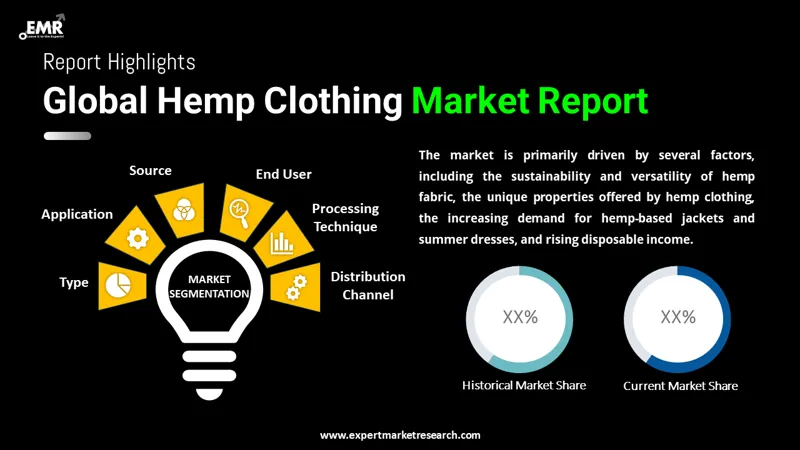
This image is property of www.expertmarketresearch.com.
Market Potential and Growth Opportunities
Growing demand for sustainable fashion
The market potential for hemp clothing in high-fashion and luxury industries is significant, driven by the growing demand for sustainable fashion. As consumers become more conscious of their environmental impact, they are actively seeking out clothing options that align with their values. Hemp clothing offers a sustainable and eco-friendly alternative to traditional fabrics, making it well-positioned to capitalize on this demand and drive market growth.
Expansion into global luxury markets
While the market for hemp clothing is currently concentrated in certain regions, there is great potential for expansion into global luxury markets. As sustainability and ethical fashion become increasingly important across the globe, there is a growing opportunity for hemp clothing to enter new markets and cater to a wider audience. By adapting to regional preferences and partnering with local retailers, hemp clothing brands can tap into these markets and drive further growth.
Partnerships with renowned fashion retailers
Partnerships with renowned fashion retailers can provide a significant boost to the market potential and growth of hemp clothing. By collaborating with established retailers, hemp clothing brands can gain access to a larger customer base and benefit from their expertise in distribution and marketing. These partnerships can help to elevate the status of hemp clothing, establish it as a desirable option in the high-fashion industry, and drive increased consumer adoption.
Conclusion
The potential for hemp clothing in high-fashion and luxury markets is significant and continues to grow. With its sustainability, versatility, and unique properties, hemp fabric offers a range of benefits for both consumers and the fashion industry. Overcoming challenges and misconceptions, educating consumers, and leveraging marketing and branding strategies are crucial in promoting the acceptance and adoption of hemp clothing. By prioritizing sustainability, fair trade practices, and transparency, hemp clothing brands can position themselves as leaders in the industry and contribute to the global shift towards more environmentally friendly and ethical fashion choices. As consumer demand for sustainable fashion continues to rise, the market potential for hemp clothing is set to expand further, creating exciting opportunities for both brands and consumers alike.
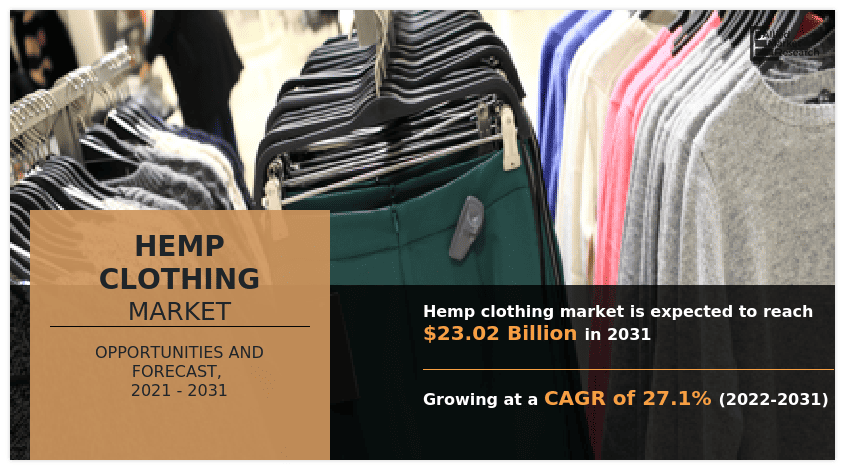
This image is property of www.alliedmarketresearch.com.
Recent Posts
Discover how bubble hash is rated on a 1 to 6 scale. From texture and color to aroma and potency, learn the key factors that determine the quality of bubble hash. Whether you're a seasoned cannabis...
Looking to learn about the most popular style of hash? This article explores the different types, from traditional to bubble hash, and reveals the people's favorite. Join us on a journey through the...

